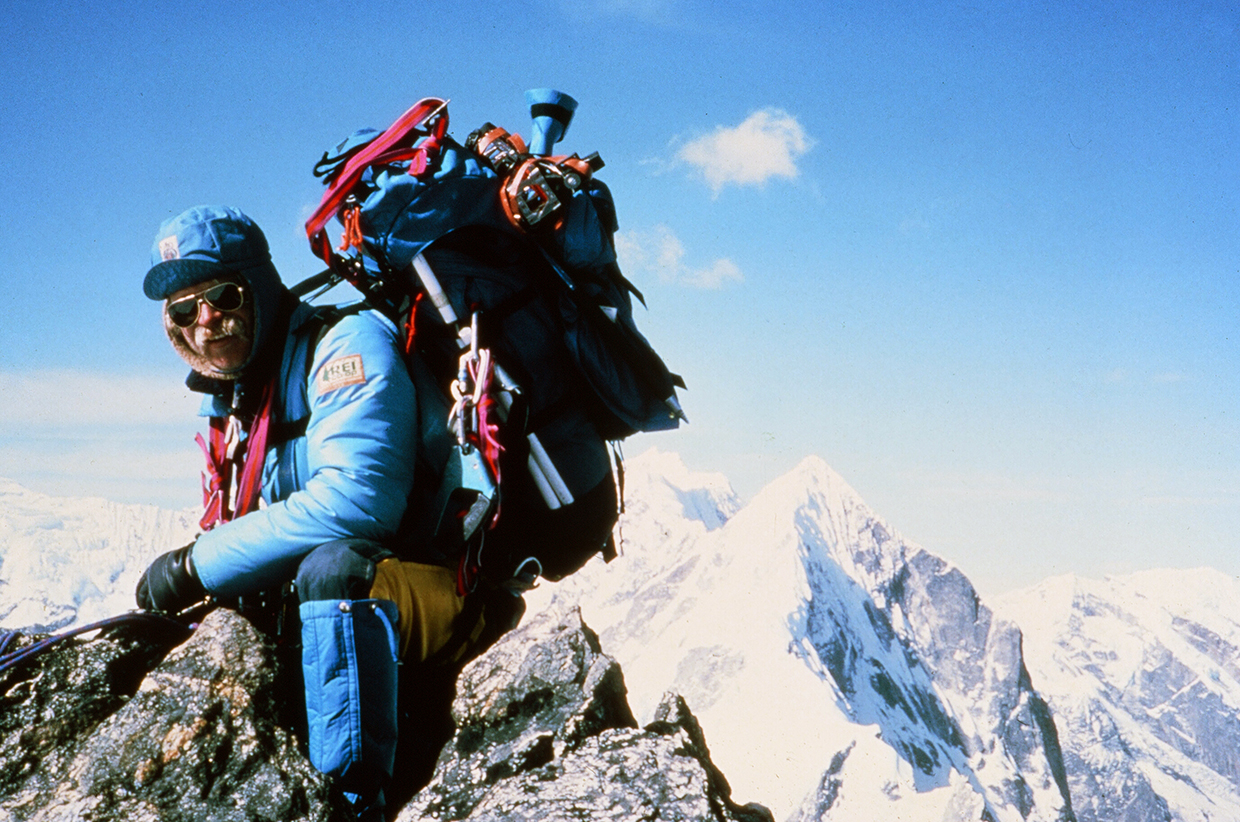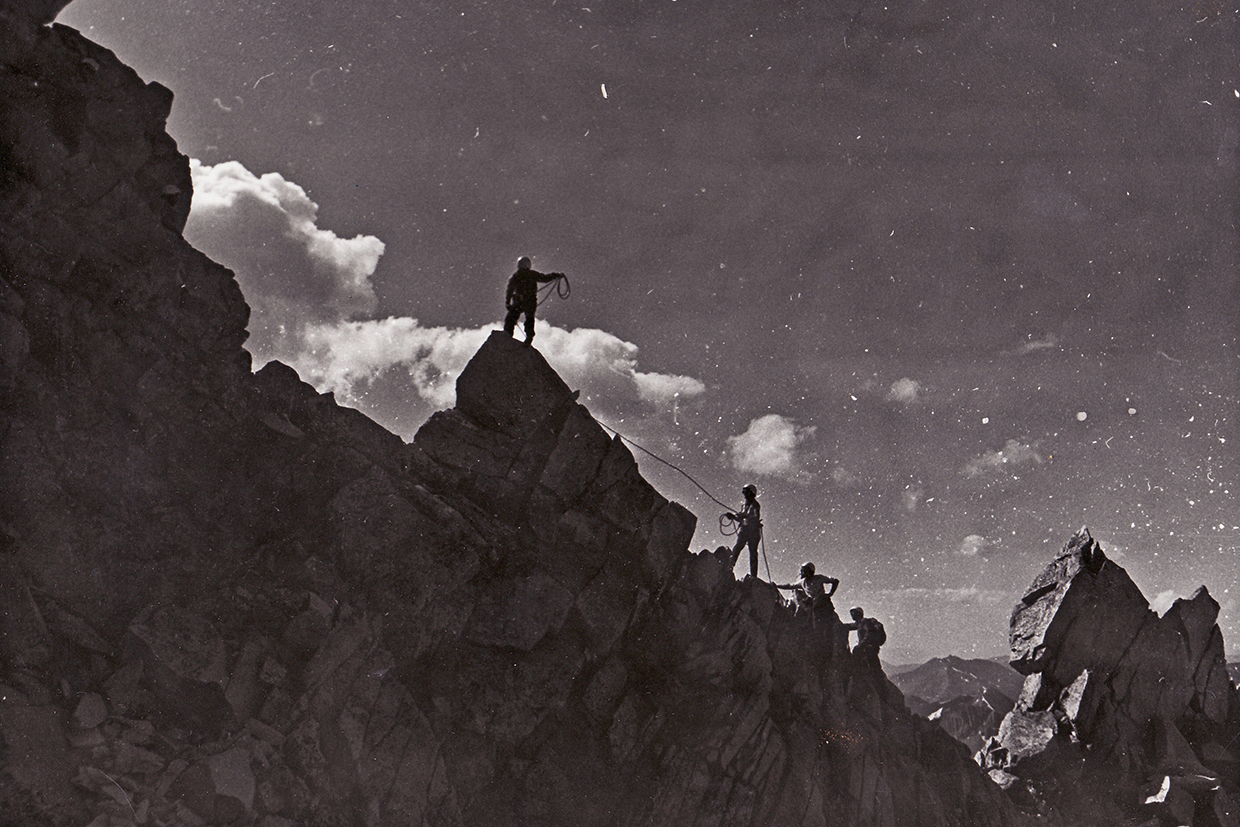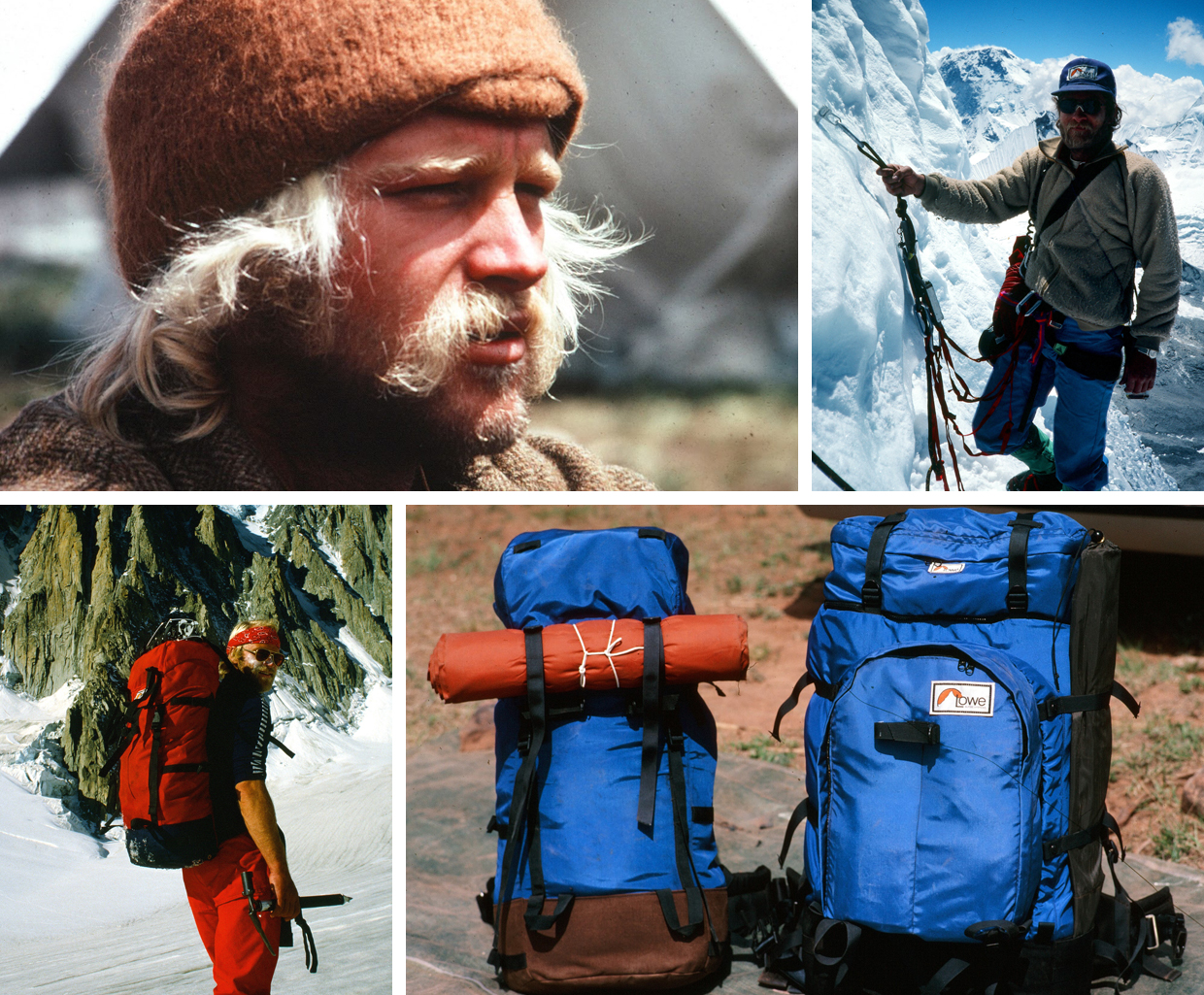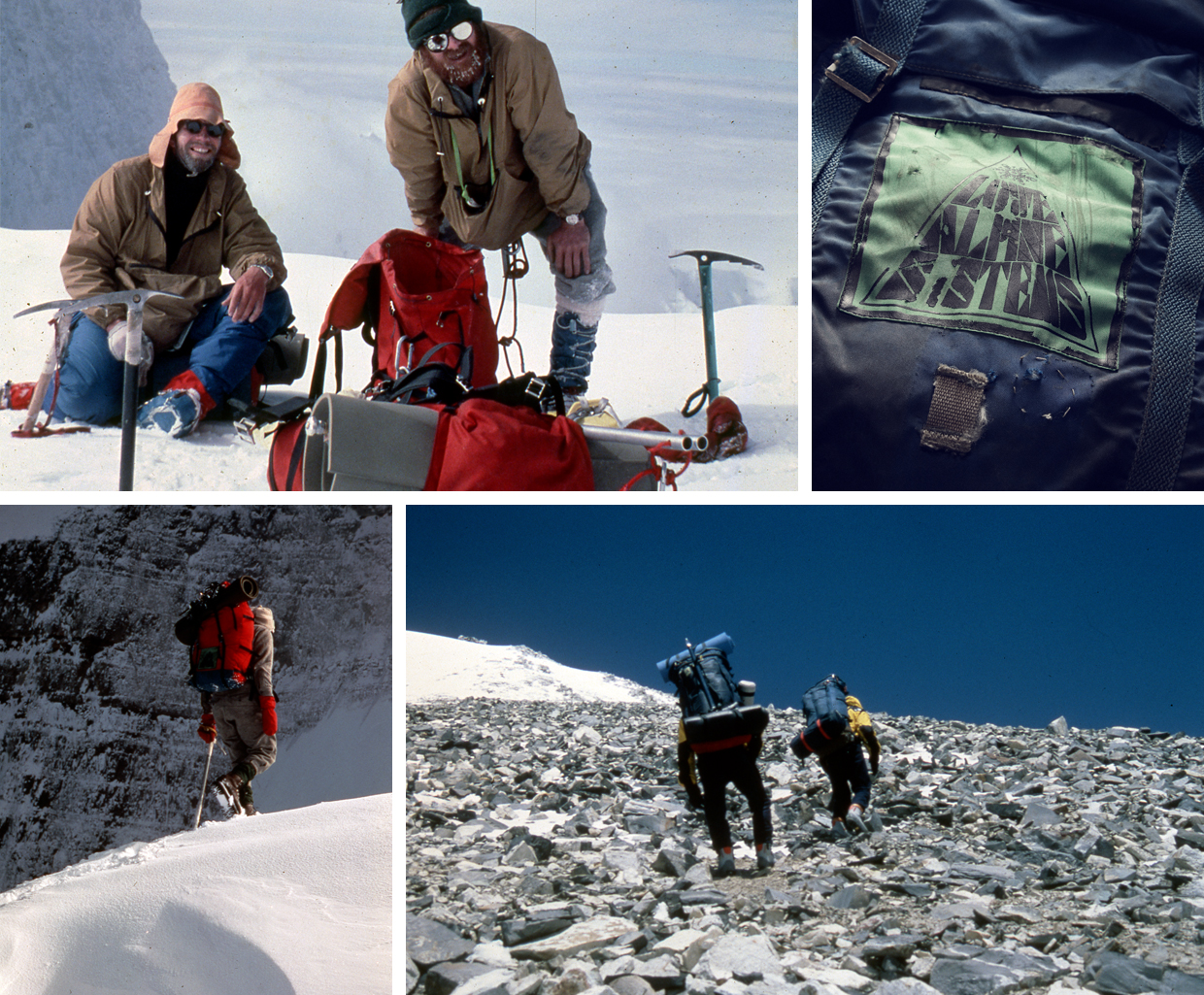Jeff Lowe: 50 years of Lowe Alpine
Gear Jeff Lowe's first ascent NF Kwangde, Nepal 1982 // jeffloweclimber.com
Jeff Lowe's first ascent NF Kwangde, Nepal 1982 // jeffloweclimber.com
This year, Lowe Alpine celebrates 50 years of pioneering ways to carry gear on the mountain, combining design expertise with a genuine passion for wild places. From humble beginnings in the basement of the Lowe family home in Ogden, Utah, Greg Lowe created a backpack that pioneered load carrying technology. The Expedition Pack became a blueprint for packs that followed, cementing Lowe Alpine’s international reputation for innovative, high-quality backpacking products. Here is the story of Lowe Alpine, and a new interview with founder Jeff Lowe on his company’s 50th anniversary.
In 1934, sixteen-year-old Ralph Lowe and his uncle hitched up a buggy and drove from the range where they worked in St Anthony, Idaho to the west side of the Tetons to climb the Owen-Spalding route on the Grand Teton. It was to be the beginning of Ralph’s life-long love of the outdoors and mountains in general, and of the Tetons in particular. It was a love that Ralph passed down to all his children, especially to his three sons Mike, Greg and Jeff. For these three children, that interest quickly turned into a passion for mountaineering.
As their skills grew; so did their interest in more demanding routes, which in turn required equipment simply not available in the late 1960s.
When Greg turned his ingenuity towards inventing outdoor equipment, an impressive series of innovations and ideas soon emerged. When he wasn’t inventing, Greg was honing his climbing skills, including a first ascent in 1967 of Macabre Wall, a huge roof problem near Ogden.
Jeff, meanwhile, had become fascinated with alpine style in the Himalayas. “I started to form this idea of a progression of climbs that would lead up to doing some of the harder and more beautiful routes on the highest peaks,” he says. The motivation, to him, was simple. “The climbs I get the most from are the ones where I push myself. I need to do climbs that are my limit, or even a little beyond, so that I have to rise to the occasion. Otherwise it’s just another climb.”
Some of the climbs Jeff has made in preparation for these ultimate routes have themselves become legendary. His first ascent, solo, of the south face of Ama Dablam and his almost successful ascent of the north ridge of Latok are both well known. Not as many people know of his long, hard free-climbs on alpine rock. Most satisfying for Jeff was his first free ascent of a 2000-foot pillar on 18,500-foot Puscanturpa Norte. Jeff free climbed the route in six hours, carefully belaying himself on the 5.10 crux sections. In 1990 he went on to free climb the Trango Tower in Pakistan with Catherine Destivelle


Q & A with Jeff Lowe
What are your earliest memories of adventures in the outdoors as a child?
We went camping from my earliest memories. We rode horses on our ranch, we had campfires and cooked outdoors. We went canoeing and hunting. I loved it all. I did give up hunting when I was 20. I didn’t like killing of those beautiful animals, though we did use every bit of meat and the skins too. My Dad was a very responsible and ethical hunter as well. He modelled great respect and curiosity for all of the creatures and the complex wonders of the earth and heavens.
What does adventure mean to you?
Not knowing the outcome and requiring the best of me to engage with the experience. Every day is an adventure now. On a deep level, my life is so very interesting and worthwhile. Again, something I learned from climbing is that it doesn’t have to only be fun to be worthwhile and rewarding.
What motivated you to take up climbing so profusely?
I had a scare when I climbed the Grand Teton with my Dad and brother Greg when I was 7 yrs old. For many years I was the youngest person to have climbed the Grand. I really enjoyed the climb, even the scary step across a big void from the Broadway ledge to get onto the ridge. On the summit, I thought I could see on the horizon, the curvature of the earth. On the trail on the way down, I fell and hit my head. It bled a lot and it scared me. I had nightmares for several years after that and found other sports like judo, gymnastics, little league baseball and especially ski racing that filled my time. Eventually, by the time I was twelve, my desire to climb overcame everything but ski racing in the winter months in my teens.
What is your earliest memory of climbing?
Bouldering at Pete’s Rock in Salt Lake City with dad, brothers and members of the Wasatch Mountain Club, led by Harold Goodro. Harold led the hardest free climb in the country in 1949 in mountain boots. Three decades later, Goodro’s Wall was listed as 5.10c in the guidebook. Harold was very encouraging to us young boys. Also, in 1957 on the School Room Cliffs, behind our house in Ogden, Utah with my Dad and my brothers. I was excited when I got to go with them for the first time.
Can you describe what you remember about those early climbs with your brothers and dad in the Tetons and other areas?
I was fascinated by the way landscape changed as we hiked up through thinning pines into the alpine zone of moraine and snow, furry marmots and the sounds of gurgling runoff water and sharp pika squeaks. Craggy peaks our inspiration; alpenglow and a can of beans at high camp, the Milky Way and a billion points of light in the frosty night. A pull of water from the canteen and a banana on cold pre-dawn starts. It was all an adventure and I was hooked from the get-go.

In one interview you described your experience of climbing the Eiger as ‘having never left you’, what was it about this climb that stood out over the many other first ascents you made during your mountaineering career?
Metanoia continues to give me new insights into the vibrating heart of reality. Every so often an “ah-ha” moment occurs, and like the petals of a flower of exquisite beauty, my heart and mind unfold a little wider.
Why did you name your route Metanoia?
I knew the word Metanoia from reading great literature. For thousands of years, shamans and spiritual seekers have starved themselves, endured long days of toil, and meditated for weeks in hopes of receiving some sort of vision or nirvana. After days of small rations on the Eiger, the space between my belly and my backbone contained nothing of substance to prop me up. Shivering in waves, I stared at a picture of my two-year- old daughter, Sonja. I felt remorse for the mess I’d made of my marriage and the sense of abandonment that she would face. My awareness detached itself from my body. I could focus on any place or time and instantly be there. My soul took me to the farthest reaches of the universe and back. The clarity of sight, hearing and consciousness were like nothing I’d ever known—beyond words. I experienced a fundamental change of thinking and an opening of my heart. I’d had my own “Metanoia” in that little hermit cave on the wall.
Why did you decide to climb Metanoia without bolts?
I read Heinrich Harrer’s book, The White Spider, when I was twelve. The epic of the first ascent never left my mind. In February 1991, I wanted to climb the North Face in a style that honoured its pioneers. Anderl Heckmair and company didn’t have bolts in 1938—just simple pitons of a limited range. They risked not being able to start their crude stoves to melt water. If their cotton and wool clothing got soaked, they might freeze to death. Even to approach that level of commitment, I had to stack the deck against myself: go alone, in winter, without bolts, and try the hardest unclimbed route I could find on the highest part of the wall. In places where my line crossed the 1938 route or coincided with the Japanese Direct, I wouldn’t use in-situ gear. My intention was to make the purest climb I could manage in the hopes that Metanoia might serve as an example of what can be accomplished without them.
Did you ever imagine that the company would still be going 50 years later?
I never thought about it. I was too busy climbing, designing and enjoying what we were doing.
What were your early aspirations for the company?
Our aspirations were to create the most functional, highest quality gear systems for the climbs of our dreams.
Was there a key route/expedition that you remember using Lowe Alpine packs on that stands out as a key moment in the genesis of the company?
The West Face of the Grand Teton in winter in 1972.
What are your memories of testing the first Expedition Pack?
Carrying huge loads into the Wind Rivers in 1969. It was the way they carried that made all the difference.
What values were most important to you in establishing Lowe Alpine Systems?
Creativity, innovation, quality, environmental preservation and lightweight Alpine style ethics on climbs of the future.
Read more about Lowe Alpine’s history, and see the new ranges of backpacks, including the Teton Range that celebrates the company’s heritage and the Ascent range of climbing and mountaineering packs at lowealpine.com.
Instagram:@lowe.alpine
Twitter: @lowealpine


